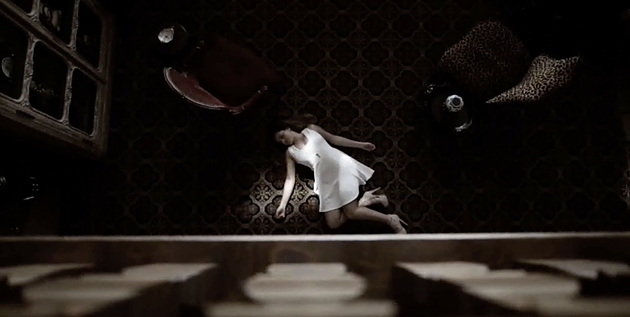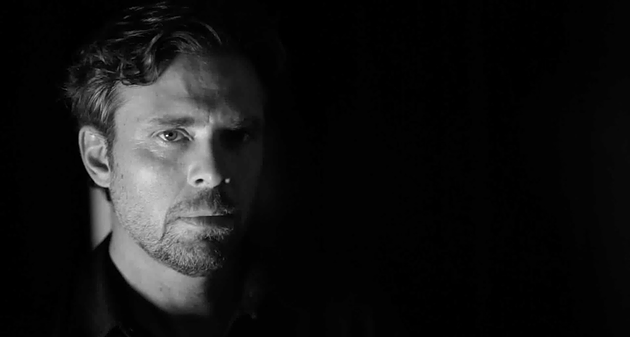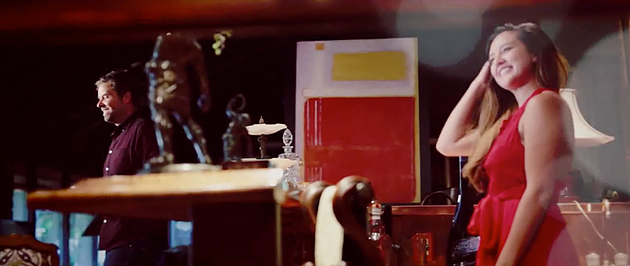The following interview was originally featured on Top Shorts.

The Making of Palpitations of Dust
February 4, 2018
Ann Huang is a creative storyteller and filmmaker based in Southern California.
After writing several successful poems, Huang wrote and directed her first film, Palpitations of Dust.
In this experimental short, the lives of three friends become complicated when facing choices of love, friendship, need, and reciprocity. Everything is hung on a thin string—from desire to love, to dream, to face life's disarrays, and then to settle on an unexpected destiny.
In the following interview, Huang shares her experience with the making of Palpitations of Dust, reveals the challenging and exciting moments of the process, and how she recruited the cast and crew in a "no-budget" project.
Ann, you have a very interesting, multi-cultural background. Tell us about your early days. When did you start writing and what sparked your interest in it?
I was born and raised in Mainland China. I grew up in a physician's family with three generations living under the same roof in a house that lacked a proper sewage system and water heater. My passion for words dates back to my childhood. One of my essays “I Saw Your Back” won numerous awards in the Children's Palace and was later published on the school board.
When I was fourteen, my parents took me out of China during the Tiananmen Square Protests of 1989. They were the scholar recipients for a medical exchange program in Mexico City. There, I adopted Spanish as my second language along with the country’s inexhaustible culture.
My childhood memories have, in many ways, instilled in me the source of inspiration for work. I will never forget my days of learning two new languages simultaneously in a class filled with Mexican classmates, memorizing my first 300 Chinese poems from Tang’ Dynasty, taking Tai Chi classes with my grandfather, and listening to the Chinese Civil War songs my maternal grandma used to sing me while lying half-paralyzed on her bed where she remained for nearly a decade during the last part of her life.
Can you share a bit about your creation process? Where do your ideas come from? How many drafts do you usually create for each poem? Do you have any mentors that provide feedback?
I believe in automatic writing, which was suggested by the surrealist movement that followed Dadaism. It can be seen as mysterious to others, but for me, it was a unique yet never-repeating process. Imagine you had a trance experience, almost like you were living in an Indian cave, and you were to write down words that were dictated to you. I don’t need many drafts except for some fine-tuning revisions, maybe three or four times after I have grasped the essence of a poem.
I have two mentors, Ralph Angel and Leslie Ullman, whom I work with closely. The workflow with them has been intuitive and uncomplicated. Ralph gave me advice on assembling a poetry collection when I gathered over 50 poems at one time. Leslie helps me with manuscript edits. I was fortunate to have known them both during my Master of Fine Arts program at Vermont College of Fine Arts where I graduated in Poetry and Literary Translation. I am constantly in debt to them for all the good work we’ve put together. I know them on a close personal level which, in turn, provides me with insurmountable trust for our daily communications.
How did you get into film directing? Was it something you always wanted to try? What makes you passionate about storytelling?
While I was working on my chapbook’s audiobook, the idea of creating visuals to challenge and compliment my poems sprung up. I wanted to see a more concrete version of my poems’ adaptation. (The images were not intended to echo the poems, but rather to challenge the audience’s understanding of the underlying meaning of the poems.)
I have always been passionate about storytelling. I am fascinated by the transformation of a story’s protagonist. I’m enthralled by the idea that the story itself could lead a character to change their personality or even their destiny. This is very powerful. I especially like to make films with unexpected turns and twists.
On my book signing night for my chapbook Love Rhythms at Laguna Art Museum, I met my photographer, Eric Stoner. We became friends and he mentioned the house where he worked. He thought it would be a great location for shooting our first poetry film.
That’s when I thought I could actually create more out of my pure lyrical poems through the process of filmmaking. That way, the once one-dimensional placeholder for my poems could transcend into multidimensional imagery with visuals and sonic impressions that accentuate the flavor of each poem’s essence. We thought it could be a huge breakthrough for showcasing the depth of the poems as well. They would no longer be constricted to the paper. They would come alive, just like they are in their creator’s mind.
You recently won an Honorable Mention for Experimental Film at the LA Film Awards for Palpitations of Dust—Bravo! How did you recruit your cast and crew and how did you fund the project? Did you hold many rehearsals before shooting?
I feel very fortunate that our debut film received so much attention in the film festival circuit. The experience is heart-warming and encouraging. I met with Eric (male lead) during my book signing night and we became friends and talked incessantly about my poem film ideas. Dean (DP) was brought on by Eric. Tatiana (female lead) is my friend and colleague.
As soon I showed them my storyboard, they were all very excited about the project. Through Eric, we scouted the shoot location and confirmed the days for principal photography. We had a great film location. The owners of the house have hundreds and hundreds of paintings and hand-painted works of art. It’s a collector’s house. We were a very small crew and were all invited to preview the house and loved it. We did some sample shoots and planned the scene takes. Before shooting, I prepped Eric and Tatiana on their wardrobes and showed them the mise-en-scene for each poetry-section. That was it. We didn’t have time for rehearsals and shot the whole movie in one-and-a-half days, which is how long the owners of the house permitted us to film there.
The film was a ‘no-budget’ project. I spent around six thousand dollars out of my own pocket. I did not have to pay for the location and paid a small amount to my cast and crew, so that was very helpful. Everyone believed in the project and was happy to contribute. We were happy to have produced our very first poem film.
We loved the stunning drone shots in the film! How did you communicate your cinematic vision when working with the cast and crew in this production? Did you use any visual/musical references?
The drone shots on the freeway (Pacific Coast Highway) were very difficult to shoot. I was with Dean who had the drone follow the car Eric was driving. Tatiana was on the phone telling us they were coming out from an intersection. It was a very busy section of the freeway and we were shooting on a weekend. We had to let them drive out a couple of times to get a shot without any tailgating cars. It took us a few takes to get that scene right.
The drone shots at the house were easier to capture. We narrowed down the scenes of Tati and Eric showing up next to the pool, coming out of the house, and fading out from the house’s bird’s eye view.
I had private sessions with each of my crew members. I would read the poems aloud to them, go over the potential scenes in connection to each poem, and relate the wardrobe and/or production materials to prep them for the storytelling process. The most advantageous part of making a poem film is that I can freely talk with my cast and crew during filming since we don’t use any of the diegetic acoustics. It’s like making a silent film. We focused on the visuals and revisited the musical reference after we got all the raw footage.
I used key objects for visual reference. For instance, I had a painting of Rothko and a radio that was domineering in red. There is a room in the house that has one wall painted red. We decided to start the film from that room and chose red as the dress color for the female protagonists in that poem-section. Then everything fell together quite neatly. In another scene, I had Tatiana walking anxiously in a room next to a purple couch. I matched her dress to the room’s interiors so that her physical stance would blend in as much possible and make her anxiousness more apparent.
What were some of the challenges you encountered during the production of Palpitations of Dust?
The most challenging task was to create scenes not only to interpret but also to transcend the poetry. Even though I wrote these poems myself and had a vague idea about their visuals, there could be a thousand different ways to interpret them. For instance, in the scene where Eric and Tatiana are standing back-to-back and struggling to find their true home, I didn’t have the location figured out until we were on-site trying to find a treehouse like the one mentioned in the poem. Then I had the idea of taking the surreal aspect of the treehouse and turning it into a dream house that would become a void/nightmare. It worked brilliantly. It took us about twenty minutes to get this scene in place but I was very happy about the result. There, my film (one medium) and poetry (another medium) challenged and conversed with each other’s form rather than simply echoing it. That was the climactic moment of making a poetry film.
Another challenging task was to capture ‘magical’ moments that were not contemplated beforehand. One instance was the shooting of protagonist’s (Tatiana’s) death scene. We saw a light reflection through the ceiling hitting a spot on the ground and we immediately knew that was it. It was a magic moment, but we were very nervous because we knew the light reflection would fade quickly, so we had to capture that scene within one to two takes.
What part of the production did you enjoy the most?
I enjoy the unexpected, the serendipity and spontaneity of making a film. I enjoy when a scene is not contemplated the way it was presented to us.
During post-production, we were looking for raw footage to incriminate Eric (male lead) for Tati’s (female lead) fall from the staircase. We couldn’t find any until there were a few seconds when Eric was looking down in Tati’s direction. He was not acting there; he was helping to find the best angle for the takes, yet he was in the take himself. There, his facial expression showed some sort of ambiguity and complicity and we included his smile in the scene. We had lots of fun scouting raw footage that wasn’t initially deemed useful for the film but became one of the key elements of defining it.
What did you learn from the process, and what will you do differently in your next production?
The filming process is very delicate and malleable. Like gold, a film would not stay in shape if a heating element were nearby. Stories themselves will make films and nothing can be done when feelings are at play.
For my next production, I would like to blend surrealistic gestures into multiple types of contemporary art media such as poetry, painting, sculpture, and film. It would be comprised of:
-
Assemblage of 12 pairs of poems, each pair consisting of one poem from the male protagonist’s perspective, and another from the female protagonist’s perspective;
-
Poems with palindrome syndrome, meaning they can be read (out loud by voice-over actors) forward and backward to signify the 24-hour day cycle. In depth, they will portray a female sun followed by a male moon (similar to the concept of Yin and Yang);
-
A juxtaposed disposition of collage-type images comprised of random objects and subjects based on paintings and sculptures in the era of surrealism.
Complete this sentence: If I could direct my next film about anything, it would be…
A film poems mini series called ANN HUANG PRESENTS.
Who are some of your favorite artists, and what makes you excited about their work? Do you feel their work influenced your writing/filmmaking style in any way?
Jean Valentine and Ralph Angel are my mentors whom I met at Vermont College of Fine Arts during my Master of Fine Arts program. Valentine’s unparalleled elusive and humane sensibilities and Angel’s pure romanticism have had a defining influence on my writing. After taking workshops and semesters with both Valentine and Angel, my writing has defined itself as pure lyricism, short and candid, with a twist of contrast and ‘pull’ within each poem.
Rene Magritte and Joan Miro (the surrealists), and Jackson Pollock and Mark Rothko (the abstract expressionists) have been my all-time favorite painters. Their works and personal stories have been an indomitable source of my inspiration. Agnes Varda’s pioneer energies in the genres of photography, film, and art were more than astounding. Introspectively and retrospectively, my work is in constant contact with their works, trying to find balance within our human nature and to make peace with nature.
Above all, Carl Gustav Jung, the psychoanalyst and philosopher whose beliefs and studies in Collective Unconscious was the very foundation of my past, present, and future works. I see myself as a cliffhanger trying to reach the tip of Himalayas while daring to look down to see how bad it would be to lose anti-gravity.
What do you like to do in your leisure time, in between film productions and poems?
I like to practice meditational yoga and run at my favorite beach with my Frenchie, Ms. Asia.
What’s the best film you’ve seen recently? Was there a certain scene that was memorable and stood out?
From the Land of the Moon. The scene where the protagonists just got married and are walking out of a small church near a farmhouse while neighbors and kids come out of the church, and Marion Cotillard’s husband puts his black jacket onto her shoulders. In the scene, she is wearing a plain, long-sleeved wedding dress, smiling vaguely. For some reason, this scene has stayed with me.
Do you have any upcoming projects you would like to share?
I am in the pre-production phase for my third short film called The Pines of Spring. I am simultaneously ‘re-visioning’ two of my book-length poetry collections, Saffron Splash and A Shaft of Light.
Is there anything you’d like to add?
To follow me or my work, your readers can go to my poetry site at AnnHuangPoetry.com. They can also follow me @AnnYuHuang on Twitter.


